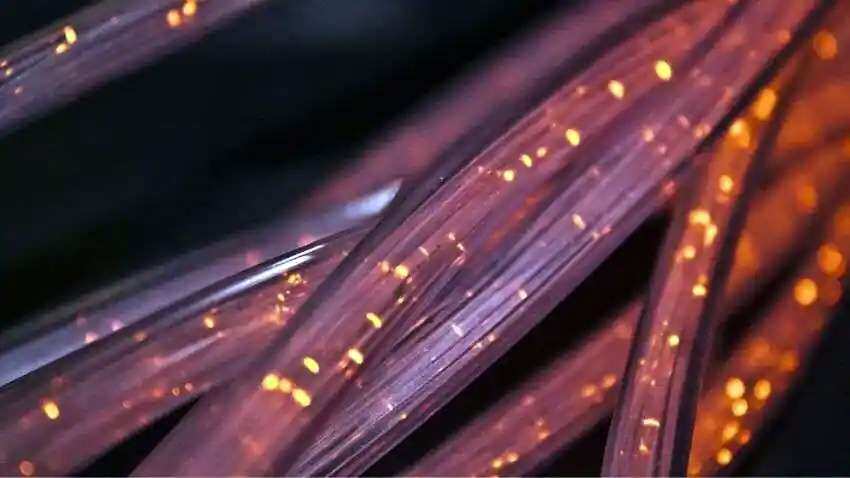Trai initiates discussion on licensing framework, regulatory mechanism for submarine cable landing

Telecom regulator Trai has initiated a discussion on licensing framework and regulatory mechanism for submarine cable landing in India.
Telecom Regulatory Authority of India (Trai) said the department of telecommunications approached it sharing its concern over some Indian International Long Distance Operators (ILDOs) for not having any stake in submarine cable system, yet seeking clearance on behalf of the owners of submarine cable for laying or maintaining such cables in Indian territorial water or exclusive economics zones and also for applying to set up of Cable Landing Station (CLS) for such submarine cables.
Submarine cables are "vital communication infrastructure" of the digital age and "critical" to the today's fast-paced data driven economy, Trai said floating the consultation paper titled 'Licensing Framework and Regulatory Mechanism for Submarine Cable Landing in India'.
"DoT has sought recommendations of Trai on licensing framework and regulatory mechanism for submarine cables landing in India within existing Unified Licence-ILD/ standalone ILD license. Trai has thus issued this consultation paper to seek views of stakeholders on the issues flagged in the reference received from DoT (Department of Telecommunications)," the regulator said in a statement.
Besides, certain other issues related to submarine cables, that the authority has suo-moto identified, have also been discussed in this paper.
At present, there is no Indian marine service provider available, who can support the submarine maintenance activities in and around Indian waters. Dependency on foreign vessels or service providers involves high mobilisation time for the repair vessel.
Trai is seeking stakeholders' views on need and feasibility of Indian flagged vessel for carrying out submarine cable operation and maintenance smoothly in a time-efficient manner.
Also, as the reliability and stability of submarine cable networks is high as compared with the terrestrial optical fibre cable network, domestic submarine cables can be envisaged to improve digital connectivity and infrastructure of Tier- I and Tier-II cities on the Indian coast.
The paper seeks to look at deployment challenges and ways to overcome them to promote domestic submarine cables in India.
"Further, to explore the benefits and challenges involved in laying stub-cables, a new concept of placing prelaid open-ended dark fiber from the CLS through Beach Manhole (BMH) into the territorial waters for upcoming new cables has been discussed for seeking views of stakeholders," Trai said.
Issues related to challenges being posed in establishing terrestrial connectivity between differently located Cable Landing Stations in India have also been raised for consultation.
Trai has sought written comments from stakeholders by January 20, 2023 and counter-comments by February 03, 2023.
Get Latest Business News, Stock Market Updates and Videos; Check your tax outgo through Income Tax Calculator and save money through our Personal Finance coverage. Check Business Breaking News Live on Zee Business Twitter and Facebook. Subscribe on YouTube.
RECOMMENDED STORIES

Looking for short term investment ideas? Analysts suggest buying these 2 stocks for potential gain; check targets

Small SIP, Big Impact: Rs 1,111 monthly SIP for 40 years, Rs 11,111 for 20 years or Rs 22,222 for 10 years, which do you think works best?
08:31 AM IST









 War on spam: Mandate on message traceability will not delay message delivery, says TRAI
War on spam: Mandate on message traceability will not delay message delivery, says TRAI  Mukesh Ambani-led RIL's telecom arm lost 79.69 lakh mobile subscribers in just 1 month, shows TRAI data
Mukesh Ambani-led RIL's telecom arm lost 79.69 lakh mobile subscribers in just 1 month, shows TRAI data TRAI floats consultation paper on terms, conditions of network authorisations under Telecom Act
TRAI floats consultation paper on terms, conditions of network authorisations under Telecom Act Telecom authorities make collaborative efforts to enhance user experience
Telecom authorities make collaborative efforts to enhance user experience  TRAI blacklisted over 50 entities, disconnecting 2.75 lakh telecom connections
TRAI blacklisted over 50 entities, disconnecting 2.75 lakh telecom connections